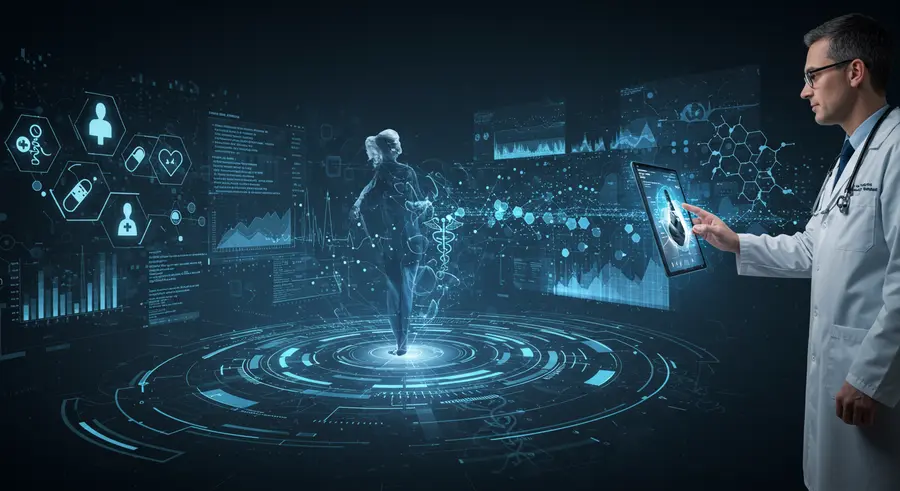Edge Computing in Healthcare: Revolutionizing Patient Care

The healthcare industry is undergoing a profound transformation, driven by technological advancements aimed at improving patient outcomes, enhancing operational efficiency, and personalizing medical treatments. Edge computing is at forefront of this revolution, bringing data processing and analysis closer to where data is generated – the patient. This shift is critical for applications demanding real-time insights and actions, from wearable sensors to sophisticated diagnostic equipment.
Why Edge Computing is Crucial for Modern Healthcare
The integration of edge computing into healthcare systems offers numerous advantages:
- Real-time Patient Monitoring: Wearable devices and bedside sensors generate a continuous stream of vital signs and health data. Edge computing allows for immediate local processing of this data, enabling rapid detection of anomalies and critical events, potentially saving lives. For instance, an edge device could analyze ECG data in real-time to alert medical staff to an impending cardiac event.
- Faster Diagnostics: Medical imaging, such as MRI and CT scans, produces large datasets. Edge computing can pre-process these images locally, reducing latency and speeding up the diagnostic process. AI algorithms running on edge devices can assist radiologists by highlighting areas of concern, leading to quicker and more accurate diagnoses.
- Enhanced Security and Privacy: Patient data is highly sensitive and subject to strict regulations like HIPAA in the United States. Processing data locally on edge devices minimizes the need to transmit raw patient data to centralized cloud servers, reducing the risk of data breaches during transmission and enhancing patient privacy.
- Remote and Rural Healthcare Enablement: Edge computing can significantly improve healthcare access in remote or underserved areas with limited or unreliable internet connectivity. Local processing capabilities ensure that essential medical services and diagnostics can function even without a stable connection to a central cloud.
- Reduced Latency for Robotic Surgery: The precision required in robotic surgery demands near-instantaneous response times. Edge computing ensures that control signals between the surgeon's console and the robotic arm are processed with minimal delay, making complex procedures safer and more effective.
Key Use Cases of Edge Computing in Healthcare
The applications of edge computing in healthcare are diverse and rapidly expanding:
- Wearable Health Devices: Smartwatches, fitness trackers, and specialized medical wearables continuously monitor health parameters. Edge computing embedded within these devices or nearby gateways can analyze data for immediate feedback or alerts.
- Smart Hospitals and Clinics: Edge servers within hospital premises can manage data from various sources, including patient monitoring systems, medical equipment, and building management systems, optimizing workflows and improving patient experience.
- AI-Powered Medical Imaging Analysis: Edge devices equipped with AI capabilities can perform initial analysis of medical images (X-rays, ultrasounds) at the point of care, providing preliminary findings to clinicians faster than traditional cloud-based analysis.
- Remote Patient Consultations (Telemedicine): Edge computing can enhance the quality and reliability of telemedicine services by processing video and audio streams locally, reducing lag and improving the diagnostic capabilities of remote consultations.
- Ambulance and Emergency Response: Ambulances equipped with edge computing capabilities can transmit vital patient data to the hospital in real-time, allowing emergency room staff to prepare for the patient's arrival. Onboard diagnostics can also be performed more rapidly.
Challenges and Considerations
Despite its immense potential, the adoption of edge computing in healthcare also presents challenges:
- Data Management and Interoperability: Ensuring seamless data flow and interoperability between various edge devices, legacy systems, and cloud platforms is complex. Standardized data formats and communication protocols are crucial.
- Security of Distributed Devices: Securing a distributed network of edge devices, many of which may be physically vulnerable, is a significant concern. Robust security measures, including encryption, access control, and regular updates, are essential.
- Regulatory Compliance: Healthcare data is heavily regulated. Edge solutions must be designed to comply with data privacy and security regulations (e.g., HIPAA, GDPR) across different jurisdictions.
- Integration with Existing Systems: Healthcare organizations often have significant investments in existing IT infrastructure. Integrating new edge solutions with these legacy systems can be challenging and costly.
- Cost and Scalability: While edge computing can reduce bandwidth costs, the initial investment in edge hardware, software, and maintenance can be substantial. Solutions must be scalable to accommodate growing data volumes and evolving needs.
The Future of Edge Computing in Healthcare
The future of edge computing in healthcare is bright, with ongoing advancements in AI, IoT, and 5G connectivity poised to unlock even more transformative applications. We can expect to see more intelligent medical devices, highly personalized treatment plans based on real-time data, and more resilient and efficient healthcare systems. The convergence of edge computing with other technologies like blockchain could further enhance data security and patient consent management. Organizations like the World Health Organization (WHO) emphasize the importance of digital health technologies in achieving universal health coverage, and edge computing will be a key enabler in this mission.
Conclusion
Edge computing is not just a technological trend; it is a fundamental shift in how healthcare data is processed and utilized. By bringing intelligence to the source of data generation, edge computing is paving the way for a more responsive, efficient, secure, and patient-centric healthcare future. While challenges remain, the benefits for patient care and operational excellence are compelling, making edge computing an indispensable component of modern healthcare innovation.
For further reading on advancements in medical technology, consider exploring resources like the New England Journal of Medicine or The Lancet.